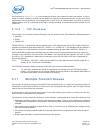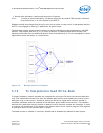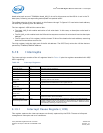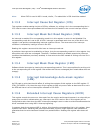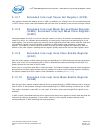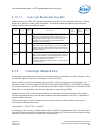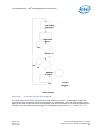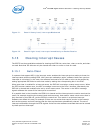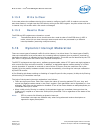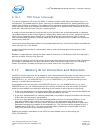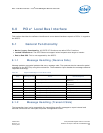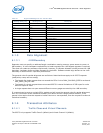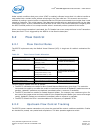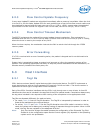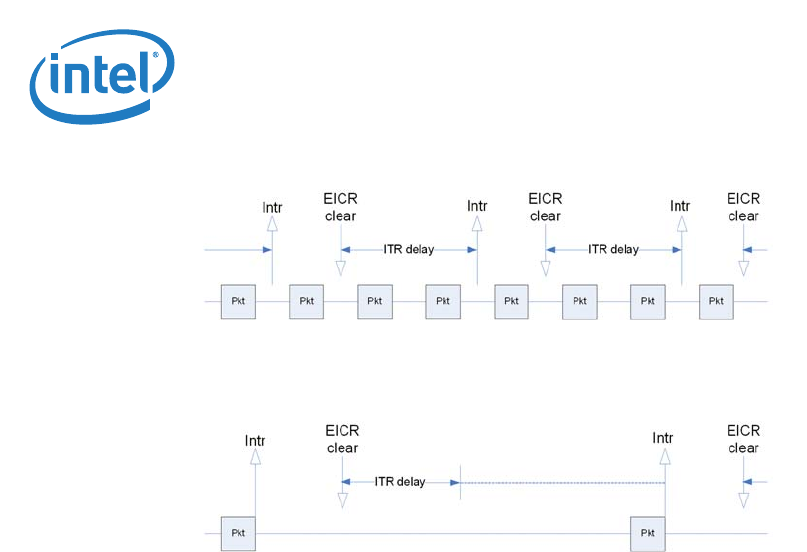
Intel
®
82575EB Gigabit Ethernet Controller — Clearing Interrupt Causes
Intel
®
82575EB Gigabit Ethernet Controller 324632-003
Software Developer’s Manual and EEPROM Guide Revision: 2.1
168 January 2011
Figure 21. Case A: Heavy Load, Interrupts Moderated
Figure 22. Case B: Light Load, Interrupts Immediately on Packet Receive
5.15 Clearing Interrupt Causes
The 82575 has three available methods for clearing the EICR bits: auto-clear, clear-on-write, and clear-
on-read. Note that ICR bits can only be cleared with clear-on-write or clear-on-read.
5.15.1 Auto-Clear
In systems that support MSI-X, the interrupt vector enables the interrupt service routine to know the
interrupt cause without reading EICR. With interrupt moderation active, software loads from spurious
interrupts is minimized. In this case, the software overhead of a I/O read or write can be avoided by
setting appropriate EICR bits to auto-clear mode by setting the corresponding bits in the EIAC.
When auto-clear is enabled for a interrupt cause, the EICR bit is set when a cause event occurs. When
the EITR counter reaches zero, the MSI-X message is sent on to the PCIe* interface. Afterwards, the
EICR bit is cleared and enabled to be set by a new cause event. The vector in the MSI-X message
signals software the cause of the interrupt to be serviced.
It is possible that in the time after the EICR bit is cleared and the interrupt service routine services the
cause, for example checking the transmit and receive queues, that another cause event occurs that is
then serviced by this ISR call, yet the EICR bit remains set. This results in a spurious interrupt.
Software can detect this case, for example if there are no entries that require service in the transmit
and receive queues, and exit knowing that the interrupt has been automatically cleared. The use of
interrupt moderations through the EITR register limits the extra software overhead that can be caused
by these spurious interrupts.



